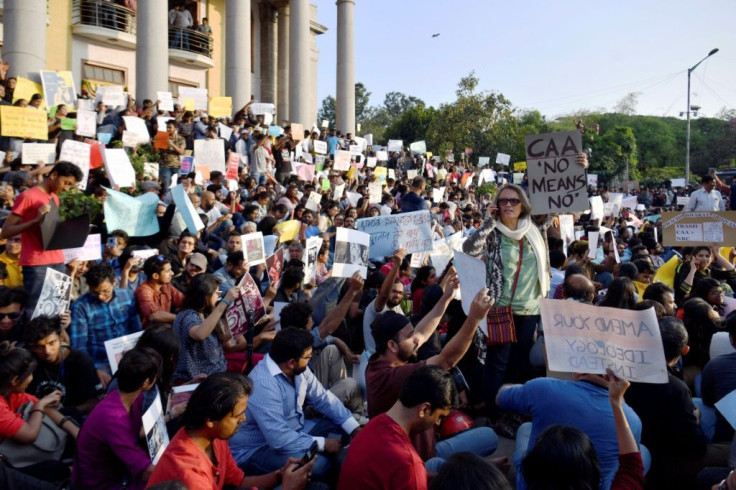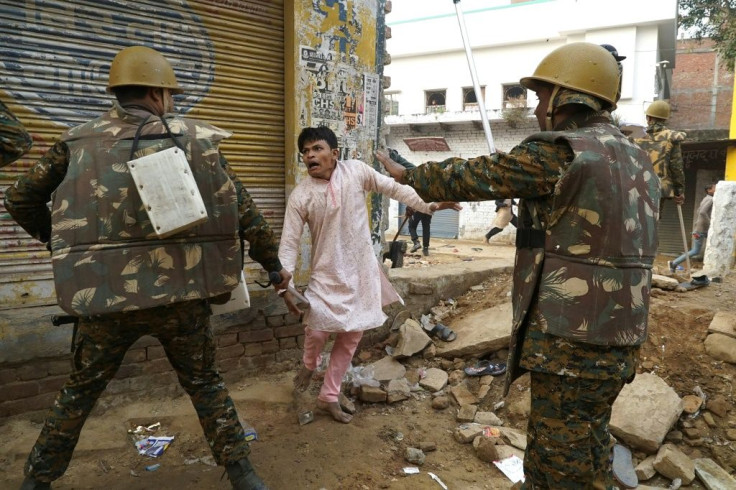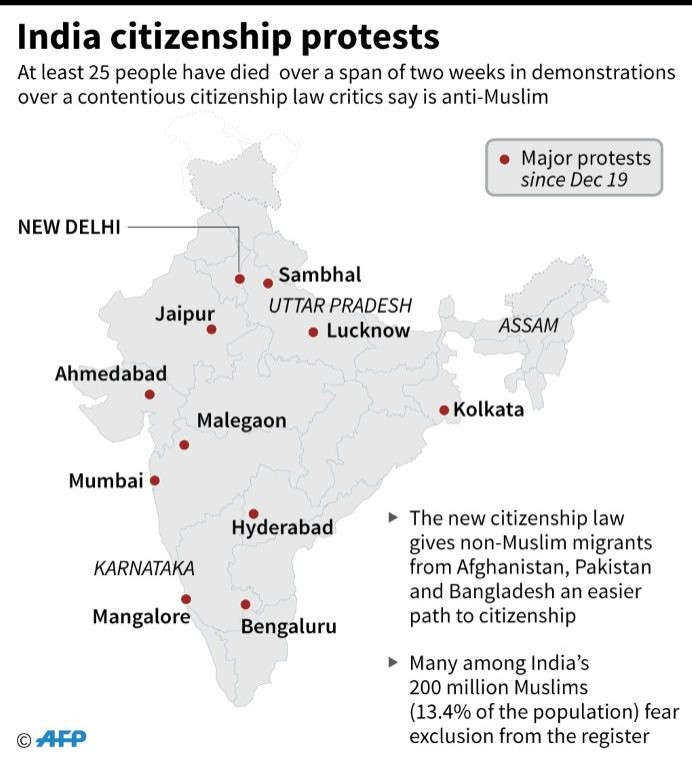Cartoon Muslims In India Publicity Blitz After Deadly Protest

India's ruling party launched a video with animated Muslim characters on social media Monday in a publicity blitz aiming to bust "myths" around a new citizenship law that has sparked deadly protests.
The law has stoked concerns that Hindu nationalist Prime Minister Narendra Modi's government wants to marginalise India's Muslim minority.
The short video clip shows two bearded men in traditional Muslim clothing discussing the legislation before concluding that the country can only progress if there is "peace and brotherhood".
Twenty-five people have died in protests so far, but demonstrations took place Monday in Chennai, Bangalore and Delhi with no violence reported.
In Kolkata, demonstrators marched in favour of the law.
The video was released by Modi's Bharatiya Janata Party on its Twitter handle after Modi on Sunday said Muslims "don't need to worry" about the new law.

The ruling right-wing government also carried an advertisement across all national dailies with a "myths vs facts" explainer saying the law was not against India's 200 million Muslims.
The message also stated that there were no immediate plans to roll out a nationwide register of citizens. Muslims and others fear they could become stateless if they are unable to prove they are Indian.
Even if the register were rolled out, "the guidelines would be framed such that no Indian citizen would face any harassment whatsoever", the advertisement read.

The wave of protests across the country marks the biggest challenge to Modi's government since sweeping to power in the world's largest democracy in 2014.

Further bad news for Modi came late Monday when the Election Commission of India confirmed that a three-party alliance secured a majority to kick the BJP out of office after an election in the eastern state of Jharkhand.
In a major setback last month, the party also lost power in Maharashtra, home to Mumbai.
The citizenship law, passed by parliament earlier this month, allows people of six religions from Muslim-majority Pakistan, Bangladesh and Afghanistan an easier path to citizenship.
Muslims are excluded.
Islamic groups, the opposition and others at home and abroad fear this forms part of Modi's aim to remould the country as a Hindu nation, something his government denies.
Demonstrations have been largely peaceful but protesters have also hurled rocks and torched vehicles, while heavy-handed police tactics including the storming of a Delhi university a week ago have fuelled anger.
Indian authorities have cut mobile internet access in places and imposed emergency laws banning assemblies.
In a speech on Sunday Modi sought to reassure the Muslim community, saying they "don't need to worry at all" and laying emphasis on India's diversity.
In the coming few days, his party says it will contact more than 30 million families, organise countrywide rallies and hold over 250 press conferences to dispel doubts over the new law.
The protests that first started in the northeastern state of Assam have since spread to the rest of the country. The tinderbox northern state of Uttar Pradesh has seen the most deaths.
Seventeen people have died, mostly from firearm injuries, in the state including a schoolboy who was crushed during a stampede that broke out as police tried to disperse the protesters.
© Copyright AFP 2024. All rights reserved.




















